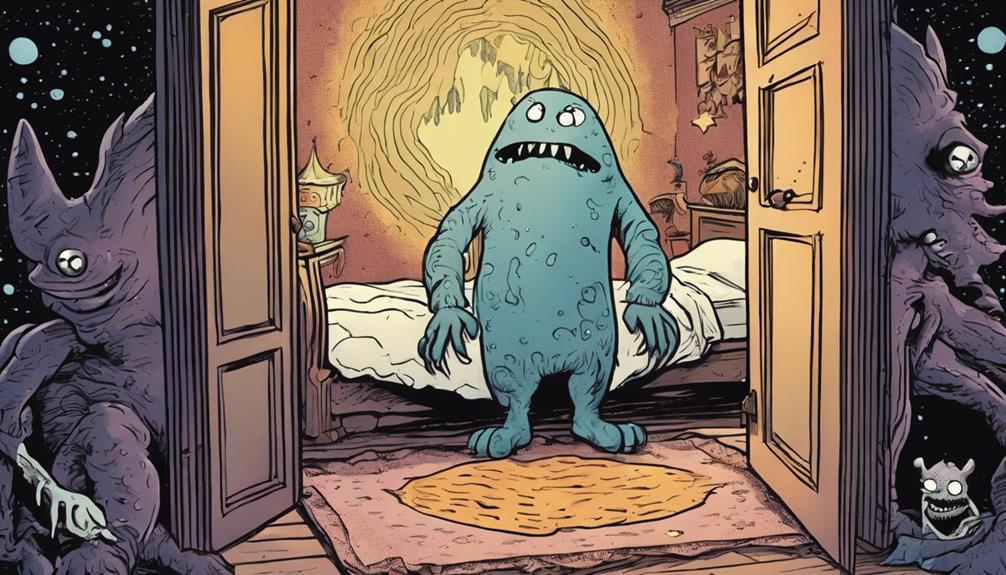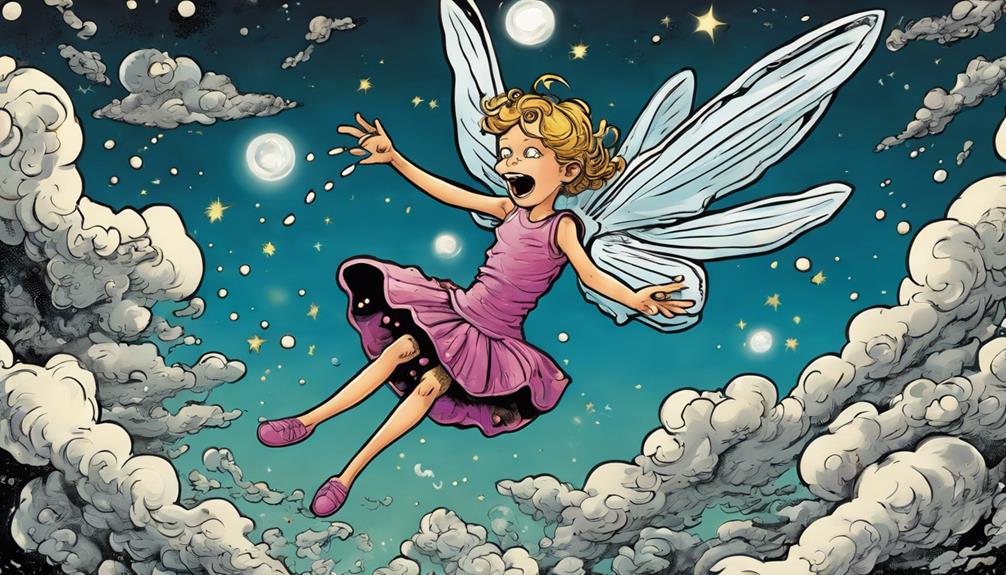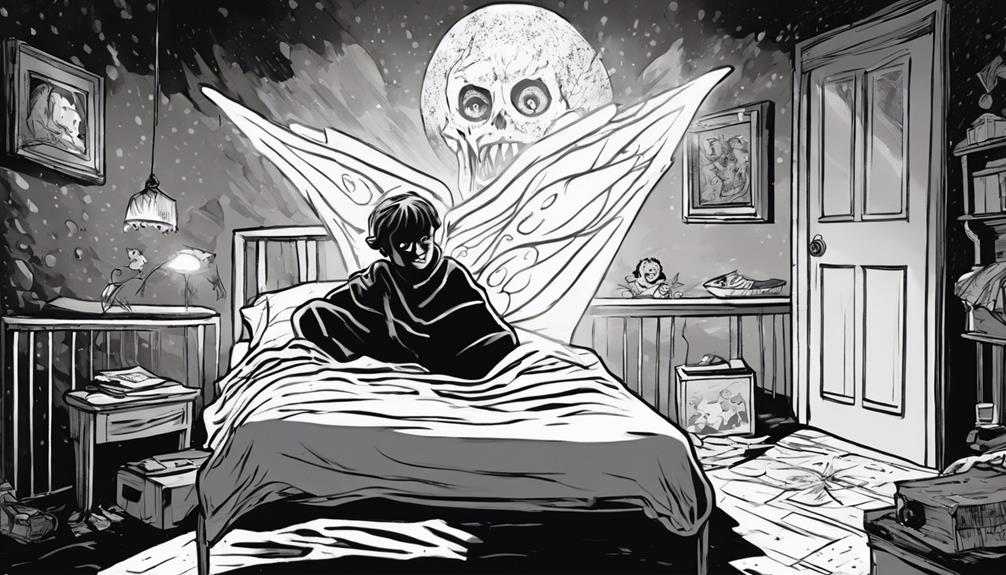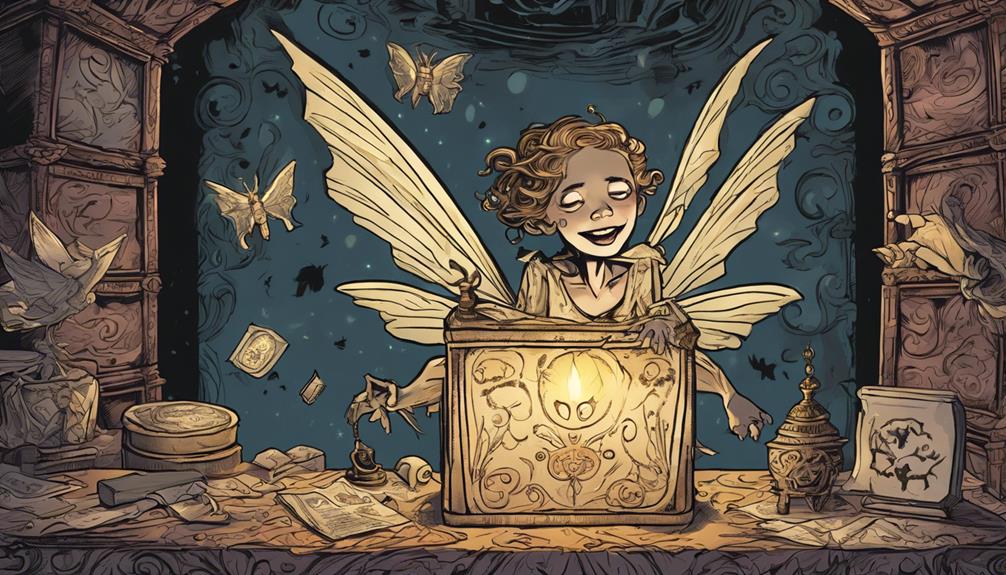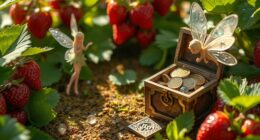Even the Tooth Fairy has her fears, and they stem from the loss of childhood innocence. She worries about children growing skeptical of magic as they age, especially when they start questioning her existence. The bittersweet nature of losing baby teeth symbolizes a shift towards maturity, and she dreads the day when kids see her as just a myth. Parental involvement is essential, helping maintain the magic while guiding kids through this change. Ultimately, she fears emotional pain tied to this rite of passage. To learn more about how these fears shape her story, just keep exploring! As children navigate the world of baby teeth and magical exchanges, the Tooth Fairy fears that the secrets of the tooth fairy tradition will be lost in the shuffle of growing up. She longs for the wonder and excitement to remain a cherished memory for children as they become adults. There is a vulnerability in her fears, as she grapples with the inevitable loss of innocence that comes with growing up.
Key Takeaways
- The Tooth Fairy fears children losing belief in her, as skepticism around age 7-8 can diminish her magical presence.
- She worries about parents forgetting to fulfill her duties, which can disrupt the enchantment of tooth loss rituals.
- The Tooth Fairy is concerned about cultural variations that may overshadow her story, like the popularity of Ratoncito Pérez in Latin cultures.
- She is anxious about the emotional impact of tooth loss, as fear and anxiety can overshadow the excitement of the rite of passage.
The Loss of Childhood Innocence

The loss of a child's baby teeth marks a poignant moment when they start to shift from the innocent world of magic to the realities of growing up. Each tooth that falls away signifies not just physical change, but an emotional journey toward the loss of childhood innocence.
You might remember the excitement of placing your tooth under your pillow, enthusiastic to believe in fantasy and the Tooth Fairy's charm. This enchanting ritual nurtures a child's imagination, creating a bridge between their innocent dreams and the impending truths of adulthood.
As children approach the ages of 7-8, they begin to question the existence of magical figures like the Tooth Fairy. This critical moment can evoke feelings of nostalgia and sadness, as they grapple with the implications of growing up.
The Tooth Fairy embodies the bittersweet transformation, reminding you that while losing teeth symbolizes a step into maturity, it also means letting go of the whimsical beliefs that once filled your world with wonder.
Embracing this rite of passage allows both you and your child to celebrate the magic while acknowledging the inevitable shift toward reality.
Skepticism About Magical Figures
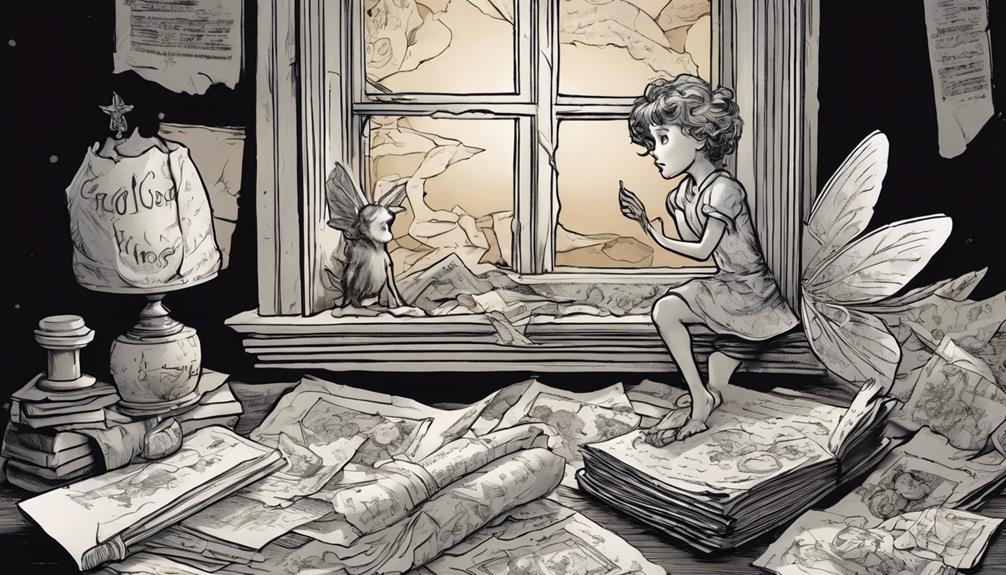
As children start questioning the magic of figures like the Tooth Fairy, their skepticism often reflects a deeper understanding of the world around them. This phase typically occurs around ages 7-8, when kids begin to connect the dots about reality and myth. They might notice that their parents sometimes forget to leave money for a lost tooth, adding fuel to their skepticism about magical figures. In fact, over 56% of parents admit to occasionally neglecting their Tooth Fairy duties, which can lead to doubts about the character's reliability.
Cultural influences also play a role. Some kids hear multiple narratives about tooth-related traditions, like the mouse figure in Latin cultures, making it harder for them to believe in one specific story. Additionally, media portrayals can either reinforce or challenge these beliefs. Positive representations of the Tooth Fairy in films and books may help maintain the magic, but they can also prompt critical thinking.
Ultimately, this skepticism is a natural part of cognitive development that encourages kids to navigate their emotions and experiences. Understanding this change can help you support them through this critical stage.
Transitioning Beliefs in Mythology

As you grow up, your beliefs about the Tooth Fairy naturally evolve, shifting from magic to understanding her role in childhood rituals.
You might notice cultural differences, like how some kids celebrate with a mouse instead, which adds layers to the myth.
These changes reflect not just personal growth, but also how society influences your perception of these enchanting figures.
Evolving Childhood Beliefs
Around ages 7-8, children often shift from believing in the Tooth Fairy to questioning its existence, marking a significant change in their understanding of mythology. This evolution in childhood beliefs is a natural part of growing up. As you navigate this alteration, you might find yourself starting to distinguish between fantasy and reality.
The experience of losing a tooth, coupled with the rituals surrounding it, can serve as a rite of passage. These moments encourage imaginative play while also fostering cognitive development. While the Tooth Fairy helps you cope with the anxiety of losing teeth, transforming a potentially distressing experience into a positive ritual, you may begin to see it as just that—a story.
Parental involvement plays an essential role in this process. Your parents might balance maintaining the myth while supporting your developmental progression. As you grow older, the Tooth Fairy may take on a nostalgic role, representing childhood innocence rather than a reality.
This shift is part of evolving childhood beliefs and helps you understand loss and reward in a more complex way, ultimately paving the way for a richer understanding of the world around you.
Cultural Variations in Myths
Exploring cultural variations in tooth-related myths reveals fascinating differences in how societies celebrate the loss of baby teeth and ease the change to adulthood.
While many children believe in the Tooth Fairy, others know her as Ratoncito Pérez in Spanish-speaking countries or Toppolino in Italy. Each tale reflects unique cultural traditions surrounding tooth loss.
In numerous Latin cultures, a mouse, rather than a fairy, trades teeth for money, showcasing the diversity in rituals. Some traditions even involve burying lost teeth for good luck or tossing them into the sky, all aimed at promoting healthy growth. These practices not only help children cope with the change from childhood but also emphasize the importance of dental hygiene.
As globalization continues to influence our world, the evolution of the Tooth Fairy myth has led to a blending of these practices, which can sometimes confuse children exposed to multiple narratives.
It's important to recognize that while the core idea remains the same—celebrating the loss of teeth—the specifics vary greatly, enriching the way children experience this rite of passage across cultures.
The Role of Parental Influence
Parental influence greatly shapes how children perceive the Tooth Fairy, with many families actively participating in rituals that foster belief in this whimsical figure. You might create special moments by leaving teeth under pillows and exchanging them for coins, adding magic to the experience. This engagement not only solidifies your child's belief but also helps them understand the fun of financial transactions.
With the average payment for a tooth reaching $5.84 in 2024, parents often navigate societal pressures to maintain the fantasy, ensuring their kids enjoy a sense of wonder during their formative years.
Moreover, your involvement can transform a potentially scary experience, like losing a tooth, into a positive celebration. This proactive role eases fears by framing the event as a magical occasion rather than a loss.
Research indicates that when parents actively engage in the Tooth Fairy tradition, children have a greater ability to negotiate their beliefs about such mythical figures. Ultimately, your efforts as a parent play a pivotal role in shaping your child's understanding of the Tooth Fairy, steering their perceptions and emotions towards a joyful experience rather than one filled with fear.
Emotional Impact of Tooth Loss
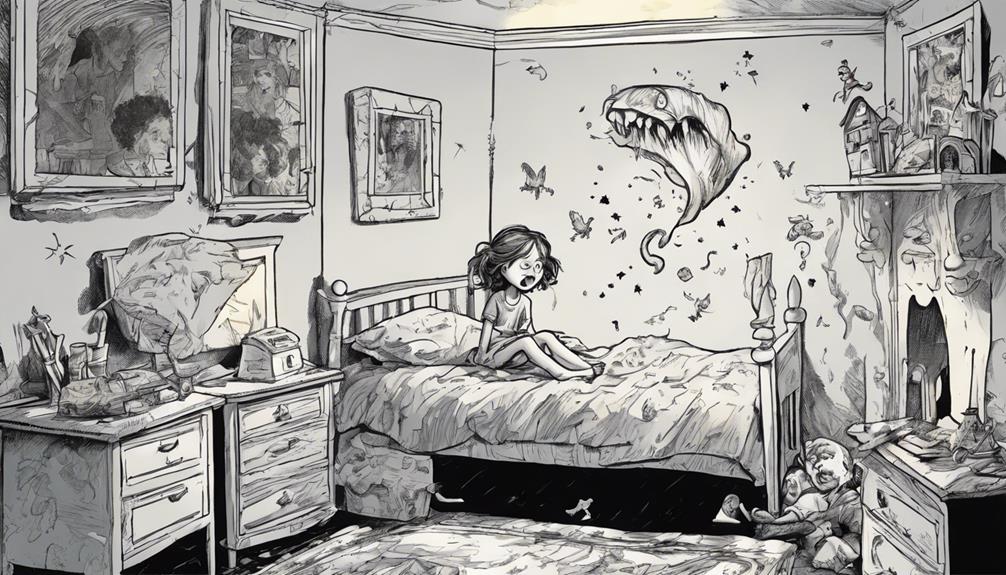
Losing a tooth can trigger a whirlwind of emotions in children, often stirring anxiety and fear as they navigate this significant change from childhood to adulthood. You might notice your child feeling a mix of excitement and apprehension about the Tooth Fairy, which can heighten their insecurity during this time. Understanding that losing teeth symbolizes growing up can help you support them through this transformation.
Research shows that kids aged 3 to 8 often engage in magical thinking, allowing them to cope with their feelings about lost teeth. They might frame the experience as a rewarding ritual, transforming fear into anticipation for a visit from the Tooth Fairy. This magical narrative can provide comfort as they face a significant childhood milestone.
Your involvement in the Tooth Fairy tradition makes a world of difference. By participating and reinforcing the idea that losing teeth is a positive experience, you help alleviate their fears. This support creates a sense of safety that can make the tooth loss journey a little less intimidating for your child. Embracing the Tooth Fairy myth together can turn anxiety into excitement, making this transformation a cherished memory.
Cultural Variations in Tooth Traditions
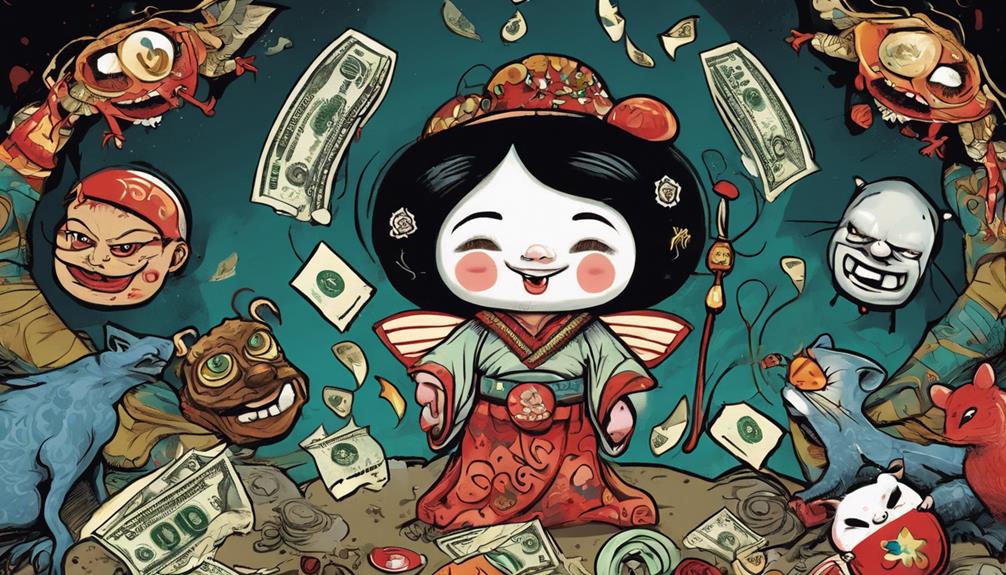
When you think about tooth traditions worldwide, you'll discover fascinating variations beyond just the Tooth Fairy.
From mice in Latin cultures to unique rituals in Japan and the Middle East, each myth reflects cultural beliefs and practices surrounding tooth loss.
These differences highlight how children can experience a mix of narratives that shape their understanding of this important milestone.
Global Tooth Traditions Overview
Across the globe, diverse cultures celebrate the loss of teeth through unique traditions, each reflecting their values and beliefs.
In many Western cultures, you might know the Tooth Fairy, who trades baby teeth for coins or small gifts, symbolizing childhood innocence. However, in Latin America, children often look for Ratoncito Pérez, a little mouse that collects their lost teeth, adding a delightful twist to the tradition.
In some Middle Eastern countries, the practice involves tossing lost teeth onto the roof or into the sky, believed to encourage healthy adult teeth growth. Meanwhile, in Japan, children have a distinct approach: they throw their lower teeth into the ground and their upper teeth onto the roof to guarantee proper alignment of new teeth.
Burying lost teeth is another common practice across various cultures, often associated with good luck and protection. This ritual underscores the significance of tooth loss and the shift into adulthood.
While the Tooth Fairy might dominate in some areas, these diverse customs illustrate how cultures uniquely honor the milestones of growing up.
Myths and Cultural Differences
Cultural variations in tooth traditions reveal fascinating myths that shape children's experiences during this significant rite of passage. While you might be familiar with the Tooth Fairy who exchanges teeth for coins in Western cultures, other regions have their unique customs.
For instance, in many Latin American countries, the adorable Ratoncito Pérez, a little mouse, takes on the role of the tooth collector, offering a different charm to the experience. In Japan, you might find kids tossing their lower teeth into the ground and their upper teeth onto the roof. This quirky ritual aims to encourage straight growth, illustrating the cultural variations in tooth disposal practices.
Meanwhile, in some Middle Eastern countries, children throw their lost teeth into the sky, making wishes for good fortune and healthier teeth. These diverse traditions not only highlight how societies celebrate tooth loss but also reflect deeper themes of memory and identity.
As the Tooth Fairy's myth evolves, understanding these cultural narratives helps you appreciate how children perceive and engage with this enchanting experience, regardless of where they live.
Addressing Children's Fears and Concerns
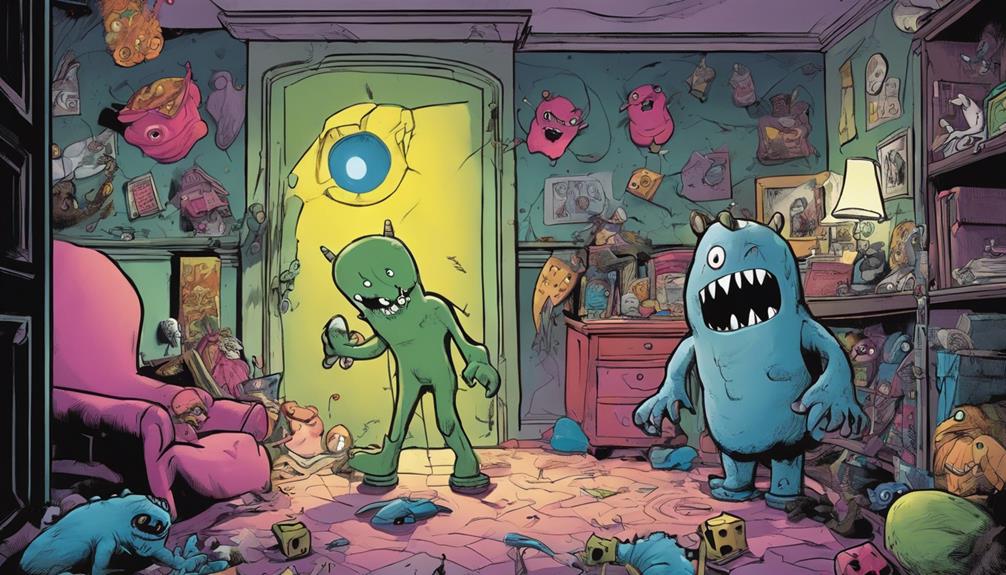
Addressing children's fears about the Tooth Fairy involves understanding their concerns and providing reassurance in a way that feels safe and comforting. Many kids worry the Tooth Fairy might take more than just their teeth, leading them to feel anxious about their belongings. To help ease these fears, you might suggest placing the tooth on the dinner table instead of under the pillow. This small change can make the experience much less intimidating.
Additionally, introducing fun books that portray the Tooth Fairy positively can help reshape their understanding. Clear communication about tooth traditions is also essential, especially when cultural variations can confuse young minds.
Here's a simple table that highlights common fears and effective strategies to address them:
| Children's Fears | Ways to Reassure |
|---|---|
| Fear of losing belongings | Suggest placing teeth on the table |
| Confusion from different myths | Share positive stories about the Fairy |
| Worries about safety | Engage in fantasy play and storytelling |
| Doubts about the belief | Encourage sharing experiences |
Frequently Asked Questions
What Are the Tooth Fairy's Superpowers?
The Tooth Fairy's superpowers include invisibility, shrinking to tiny sizes, flying swiftly, and communicating telepathically. She collects teeth under pillows while ensuring a magical experience with rewards, making losing a tooth feel special for kids.
What Is the Tooth Fairy's Favorite Animal?
You might wonder what the Tooth Fairy's favorite animal is. Imagine a tiny, magical creature flitting about, collecting teeth under moonlight. It's a playful mouse or a gentle rabbit, embodying childhood wonder and enchantment.
Conclusion
As the moonlight spills softly through your window, remember that the tooth fairy fears the dimming glow of childhood innocence.
She worries about the doubts that creep into young hearts, like shadows stretching across a sunlit room.
Each fallen tooth holds a story, yet she dreads the moment when magic fades, replaced by skepticism.
Embrace the wonder, keep your beliefs alive, and let the sparkle of imagination flicker brightly, for it's in your dreams that she truly thrives.
